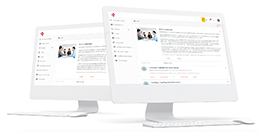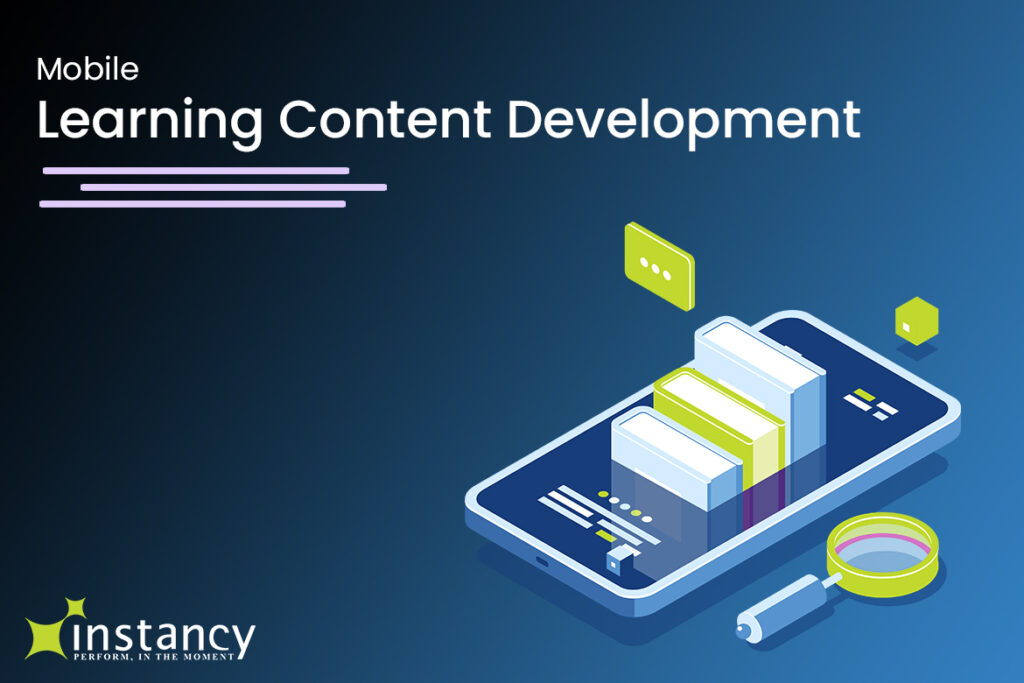The ability to access learning on mobile devices. Developing Mobile Learning Content for Mobile Users and Learners.

Geddes (2004) defines mobile learning as “the acquisition of any knowledge and skill through using mobile technology, anywhere anytime that results in an alteration in behavior.”
The ability to access learning on mobile devices is mandatory in today’s dynamic world where people are constantly on the move. Mobile learning has gained leverage today due to its ease of access, simplicity, short duration, and concise design.
Content for mobile devices has to be easily accessible and customized or designed for the learner’s needs. Developing e-learning for mobile can be challenging due to the variety of mobile devices as well as the varying levels of quality and resolutions. While creating mobile learning, it would help to keep certain points in mind:
Developing Mobile Learning Content for Mobile Users
Keep it short
Learners learn best when information is presented in small chunks. Too much content can be overwhelming to a learner. Remember that users are more likely to terminate mobile applications that take more than five seconds to load. The use of graphics and images are helpful to a learner when used correctly. Hyperlinks can be provided for reference where required. Modules of 5 – 10 minutes are apt for mobile learning.
Using graphics
Graphics for mobile devices should be quick to load and neat. A cluttered or crowded screen distracts learners and may even make a learner switch off. The acceptable image formats for mobile learning include PNG, JPG, GIF, and animated GIF formats.
Flash vs. videos
Videos are best presented in the MP4 format as compared to Flash animations. Flash will not work on BlackBerry and Apple iPhone/iPod devices. Differences in screen size for various types of mobiles and the availability of various apps have also made Flash a less relevant option. In fact, HTML5 and CSS3 have become viable alternatives to Flash today.
The download time and length of a video are other factors to be considered for mobile learning. For heavy content in videos, it is a good idea to enable the user to download and access the content later.
Presentation of content
Navigation should be simple and user-friendly for a mobile learner, who often does not have the patience to scroll through pages of text while on the move. A mobile learning experience should be touch screen-friendly too with user interface elements (buttons, menus) that have a sufficient touch area. An informal and conversational style also helps when delivering mobile content to a learner. In addition, a learner should be able to return and continue where they left off the last time.
Education with Mobiles
Ownership of a mobile device is high among students pursuing higher education and tablets seem to be popular for academic purposes. For workplace learning, higher education, and K-12, a module can be presented as pre-work, additional content, or key points of a course. A standalone assessment for students delivered via their mobile devices can effectively test knowledge gained from an e-learning program or an instructor-led course.
To summarize, creating a valuable and effective mobile learning experience can help more learners and give thousands of employees a range of enhanced skills with less effort. The “fun” value and the “just-in-time” nature of mobile learning make it a sought-after learning experience.
For more information on how to create Mobile Learning Apps easily and affordably, please click here….





